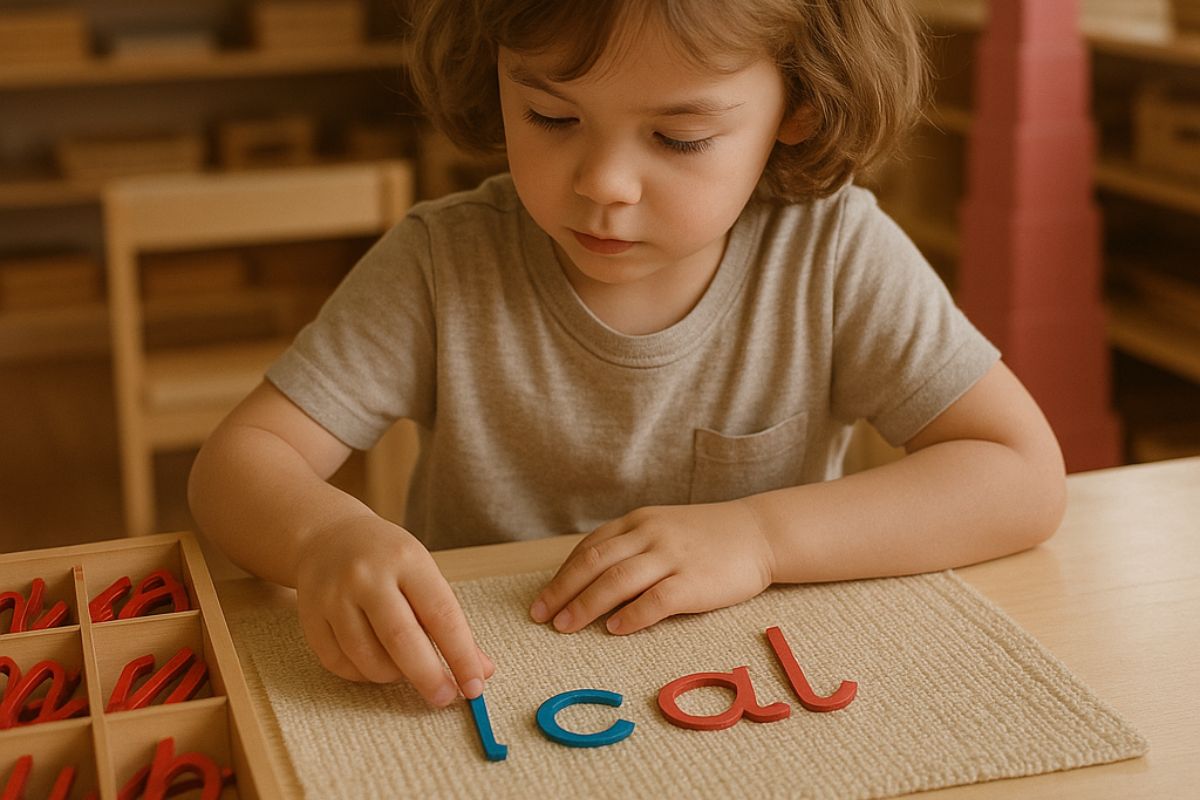One of the most powerful lessons in a Montessori classroom comes from what the child learns after making a mistake. In this environment, errors are not punished or fixed by the teacher right away. Instead, children are encouraged to notice mistakes, reflect, and try again. This process is called self-correction—and it’s at the heart of Montessori learning.
Rather than focusing on getting everything right the first time, Montessori encourages growth through practice. Self-correction gives children the chance to learn at their own pace, using materials designed to guide them gently back to the right path. The ability to recognize and adjust their own actions builds not only academic knowledge but also life-long confidence and independence.
What This Article Covers
This article explains how self-correction works in Montessori education and why it’s such a valuable part of learning. It looks at how the materials are designed, how teachers support the process without interrupting it, and how children develop deeper thinking skills through their own discovery.
You’ll learn how self-correction encourages focus, builds resilience, and nurtures a stronger sense of responsibility in learners—all in a setting that respects each child’s rhythm.
Why Self-Correction Matters
Children often learn best through doing. When they’re allowed to try something on their own, notice it didn’t work, and then fix it, they remember the lesson much more clearly. This approach also respects their natural curiosity and need for movement and repetition.
In Montessori classrooms, children are not rushed to find the answer. They’re given the space to figure things out and the tools to do so. This builds a sense of trust in their own ability to solve problems. Over time, they stop looking to adults for constant approval and start trusting their inner voice.
How the Materials Support Self-Correction
Montessori materials are designed to offer immediate, visible feedback. For example, a knobbed cylinder will only fit into the correct hole. If a child places it in the wrong spot, it simply won’t work. There’s no need for an adult to say anything—the material shows the mistake.
This kind of feedback allows the child to reflect in real time. They can remove the cylinder, try another hole, and observe what changes. The materials are quiet teachers. They don’t judge. They allow space for repetition, curiosity, and discovery.
Other materials include built-in control of error features. These could be color patterns, shape mismatches, or numerical sequences. Children use these clues to check their own work. They develop a habit of pausing to think rather than rushing through.
The Role of the Teacher
In Montessori classrooms, the teacher acts more like a quiet guide than a traditional instructor. They observe rather than correct, allowing children the dignity to solve problems independently. If help is truly needed, it’s given gently, without judgment.
Instead of saying, “That’s wrong,” a teacher might ask, “What do you notice?” or “Does that feel complete to you?” This shifts the focus away from perfection and toward awareness. The teacher trusts the child’s ability to self-correct and gives them the tools and time to do it.
This approach respects the child’s effort and builds a positive relationship with learning. Instead of fearing mistakes, children become curious about them. They know that every error is a chance to learn something new.
Building Focus and Resilience
Self-correction supports more than academic skills. It builds deep concentration. Children learn to tune into their work, notice small details, and adjust their actions without external pressure. This strengthens their ability to focus over time.
It also nurtures resilience. When a child corrects a mistake on their own, they feel proud. They learn that errors aren’t the end—they’re just part of the process. This mindset makes it easier to take on challenges, try new things, and keep going even when it’s tough.
The confidence that grows from these experiences stays with them far beyond the classroom. They carry it into friendships, problem-solving, and future learning.
Encouraging Ownership of Learning
Montessori doesn’t just teach children what to learn—it teaches them how to learn. Self-correction is key to this. It encourages kids to pay attention, notice their own patterns, and feel responsible for their work.
This sense of ownership creates more motivated learners. They are not just completing tasks to earn rewards or avoid punishment. They are genuinely interested in doing the work well for its own sake.
When a child feels that the work belongs to them, they treat it with care. They return materials neatly, try again when something doesn’t work, and take pride in their progress. This kind of internal motivation is more lasting than any sticker chart or external praise.
Supporting Self-Correction at Home
Parents can bring this mindset into the home, too. Instead of pointing out every mistake, ask gentle questions. Let your child check their work or try another way. Offer materials that give clear feedback, like puzzles or matching games.
Be patient with the process. It might take longer, but the results run deeper. Your child is learning to think, to problem-solve, and to believe in their own ability to figure things out.
Creating a home environment where mistakes are treated as learning moments helps children feel safe to try. It also sends the message that you trust them to grow at their own pace.
A Foundation for Life
Self-correction is more than just a technique—it’s a philosophy. It teaches children to become thoughtful, independent learners. They’re not just getting the right answer—they’re understanding how they got there.
This process builds minds that are calm, curious, and capable. It plants seeds for a future where learning feels personal, meaningful, and lasting. In a Montessori setting, self-correction doesn’t just help children learn—it helps them grow.
